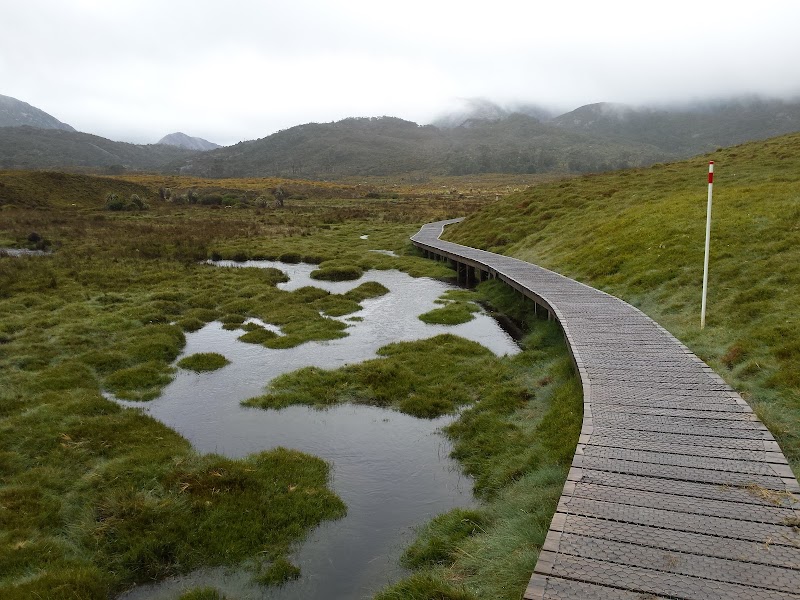
Burnie Ten Road Race: Tasmania’s Coastal Challenge of Endurance and Community
The Burnie Ten Road Race offers a flat yet wind-tested 10K along Tasmania’s northwest coast, blending the excitement of competitive running with coastal beauty. Perfect for runners and adventurers seeking a well-supported race amid Burnie's vibrant community and stunning seascapes.
Prepare for Coastal Winds
Wind conditions can change quickly along the coast and affect your pace. Dress in layers and anticipate stronger gusts near open water sections.
Hydration Strategy
Utilize race-day water stations, but bring a small handheld bottle to maintain consistent hydration without interrupting your stride.
Choose Supportive Footwear
Running shoes with firm soles and good grip will help maintain traction on road surfaces and uneven pavement edges.
Arrive Early for Warm-Up
Burnie’s coastal air cools quickly; an early warm-up helps your muscles adjust and prevents stiffness.
Burnie Ten Road Race: Tasmania’s Coastal Challenge of Endurance and Community
On the northwest coast of Tasmania, the Burnie Ten Road Race presents a unique adventure blending athletic challenge with vibrant community spirit. This 10-kilometer course follows Burnie’s scenic urban and coastal roads, pushing runners through flat stretches, occasional rolling hills, and fresh ocean breezes that seem to urge you onward. The route skirts the edge of Bass Strait, where the wind dares you to hold your pace as the race unfolds through the practical yet engaging terrain of a working city meeting open air.
Runners of all levels find an accessible yet rewarding test here. The mostly paved roads deliver underfoot consistency, but the unpredictability of coastal winds and shifting weather demands smart preparation: breathable, layered clothing and shoes suited for tarmac with solid grip. Timing your hydration is key—water stations appear at regular intervals, but having your own bottle helps maintain rhythm without breaking momentum.
The Burnie Ten is more than a race; it’s a communal celebration of motion and place. Early morning light brightens Burnie’s streets with sharp clarity, while local supporters lining the course provide bursts of encouragement that stir your determination. For visitors, combining the event with a stay in Burnie offers chances to explore nearby beaches, reserves, and cafes, making this race a practical base for a broader outdoor adventure.
Athletes should note: while the elevation gain is minimal, averaging just under 50 meters across the course, the coastal wind can be a formidable adversary. Strategic pacing and mental focus are your best allies. Post-race, walkers and joggers can sample connected trails around Burnie’s foreshore, taking in rugged seaside views that remind you how the land and sea remain fiercely independent yet respectful partners in this rugged corner of Tasmania.
The Burnie Ten Road Race demands respect not for sheer physical conquest but through engagement with a route that is both a test and a welcoming path. Practical gear, an eye on weather updates, and a mindset attuned to rhythm and resilience will ensure you take full advantage of the experience, whether your goal is to set a personal best or simply cross the finish line amid community cheers.
Nearby Trips
All Adventures
Boat Charters
Water Activities
Adventures near Burnie, Tasmania
Discover the unique and memorable adventures that make Burnie, Tasmania special.
Frequently Asked Questions
What is the Burnie Ten Road Race route like?
The race follows a largely flat 10-kilometer urban loop along coastal roads, featuring a mix of flat stretches and mild undulations. Participants experience Burnie's seaside atmosphere with refreshing ocean breezes adding natural challenge.
Are there water stations along the course?
Yes, there are several conveniently positioned water stations offering hydration throughout the route. However, many runners opt to carry personal bottles for uninterrupted fluid intake.
When is the best time to participate in the Burnie Ten?
The race typically occurs in October, aligning with Tasmania's spring season when temperatures are mild and the natural environment is vibrant but winds can be variable.
What wildlife might I see around Burnie during the race weekend?
While the race itself is urban, nearby coastal reserves harbor native birds like the Pied Oystercatcher and Eastern Rosella, and on quieter runs before or after race day, you might spot wallabies or coastal seabirds.
Is the course suitable for beginners or only experienced runners?
The Burnie Ten is accessible for a wide range of participants including beginners, but the coastal wind exposure can add difficulty. Preparing with proper pacing and hydration helps novices complete the route confidently.
Are there any local traditions or events linked to the Burnie Ten?
The race is a highlight in Burnie’s calendar, celebrated with community fairs, live music, and local food stalls, turning race day into a vibrant gathering for residents and visitors alike.
Recommended Gear
Breathable Running Shoes
Provide cushion and grip for paved roads and curbs, reducing risk of slips or fatigue on varied surfaces.
Lightweight Windbreaker
Protects against coastal gusts without overheating, ideal for unpredictable spring weather.
Hydration Bottle
Keeps hydration flexible and accessible between supplied water stations.
UV Protection Hat
Shields face and eyes during bright mid-summer race starts.
Local Insights
Hidden Gems
- "Devils Elbow viewpoint offers a lesser-known coastal panorama just north of the race route."
- "Emu Valley Rhododendron Garden features unique flora and peaceful walks a short drive from race center."
Wildlife
- "Keep watch for swift Eastern Rosellas in treetops and foreshore Pied Oystercatchers calling along the shore."
- "Occasional wallabies may be spotted in green spaces bordering urban Burnie."
History
"Burnie's growth as a port and industrial hub shaped the practical layout of its roads, reflecting Tasmania’s working-class origins alongside rich natural coastal beauty."
